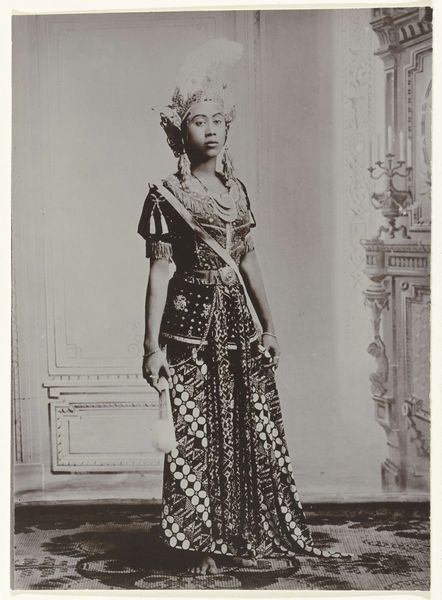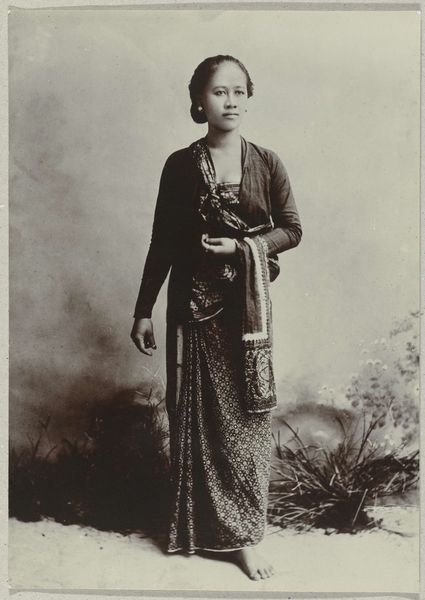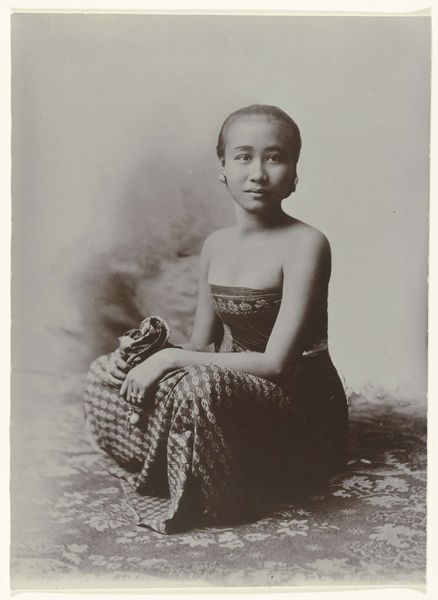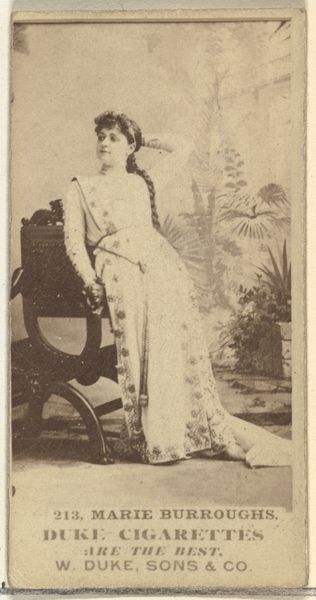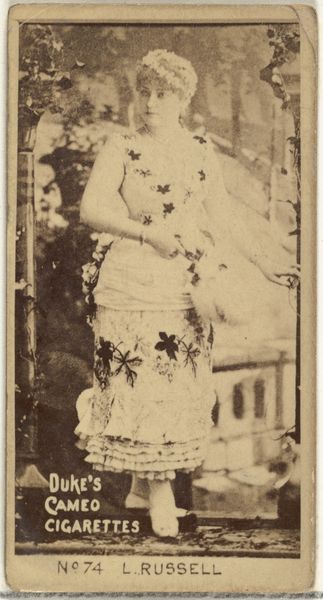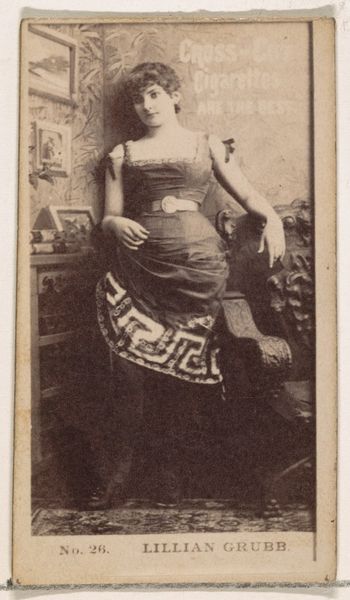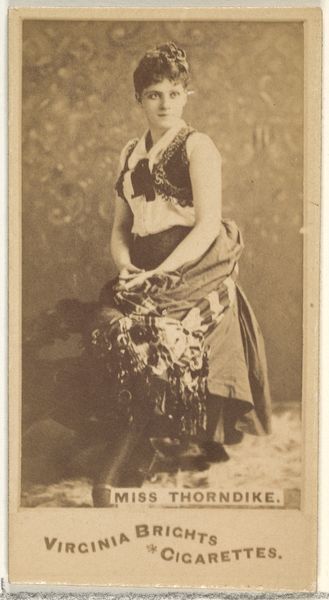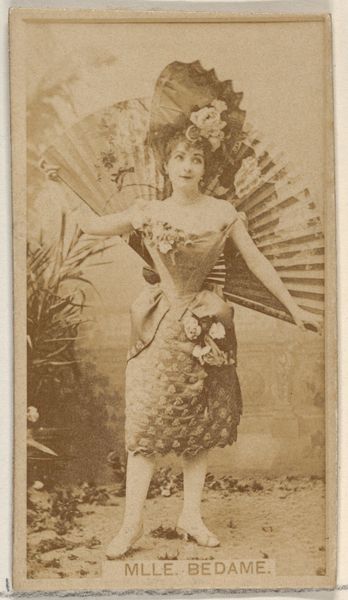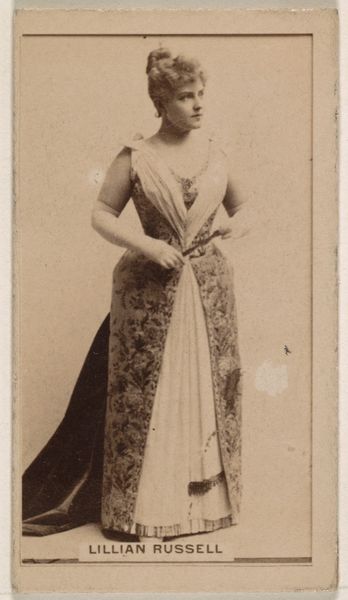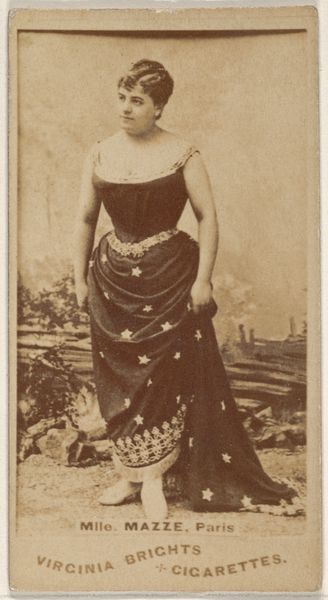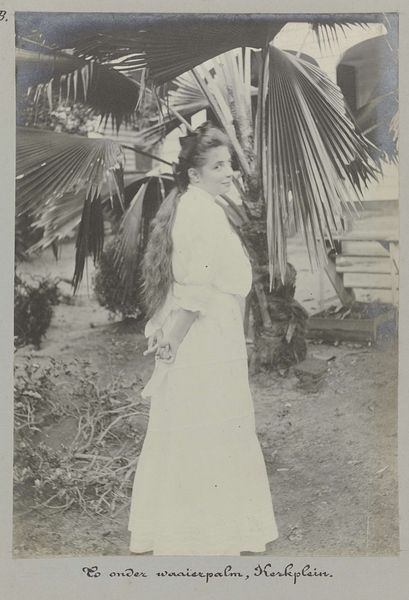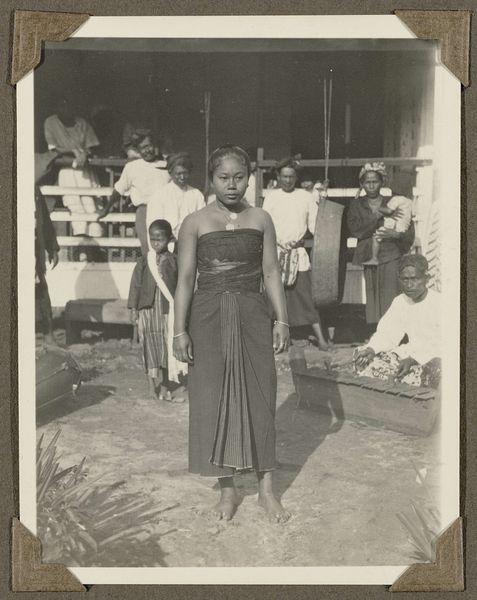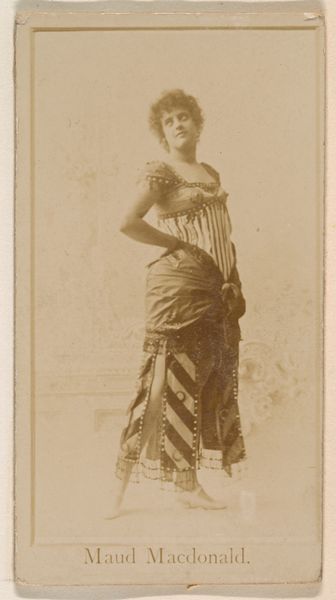
performance, photography
#
portrait
#
performance
#
asian-art
#
landscape
#
photography
Dimensions: height 237 mm, width 176 mm
Copyright: Rijks Museum: Open Domain
Editor: This photograph, taken in 1912 by Onnes Kurkdjian, is titled "Danseres buiten op een kleed in Nederlands-Indië," or "Dancer outside on a carpet in the Dutch East Indies." The dancer's poised gesture and ornate costume are captivating. How do you interpret the cultural and historical context of this piece? Curator: This photograph offers a complex intersection of representation, power, and cultural exchange. It is vital to ask, what does it mean for a Western photographer to capture a Javanese dancer in 1912, during a period of Dutch colonial rule? It brings questions of Orientalism and the Western gaze to the fore, raising concern about whose story is told, and how it is told. Editor: I hadn’t thought of the photographer’s role in that way. It is interesting to see this through the lens of colonial power dynamics. Curator: Exactly. The dancer, adorned in traditional attire, is performing a cultural practice for an audience – and in this instance, that includes us, the viewers today. But how might her performance have been influenced by the colonial context? Is she performing for the camera in a way that exoticizes or romanticizes her culture for Western consumption? Considering the potential distortions inherent in the colonial dynamic challenges us to see beyond the surface and to reflect critically. Editor: So, we should be questioning not just what is shown, but also the power dynamics that shaped the image itself? Curator: Precisely. Considering the photographer's position and the broader socio-political climate is crucial. It allows us to confront uncomfortable histories and acknowledge the legacy of colonialism in shaping cultural representation. This approach is fundamental when dealing with works produced in colonial contexts, compelling us to think about agency, representation, and the politics of seeing. Editor: This definitely gives me a lot to consider about photography of this era and to contextualize such images as primary historical resources, rather than passively viewing it as an appealing dancer. Thanks. Curator: The past speaks, but we must listen with a critical ear, understanding the power structures at play. It's this contextual understanding that helps us make sense of both history and art, with both interwoven, inseparable strands.
Comments
No comments
Be the first to comment and join the conversation on the ultimate creative platform.
